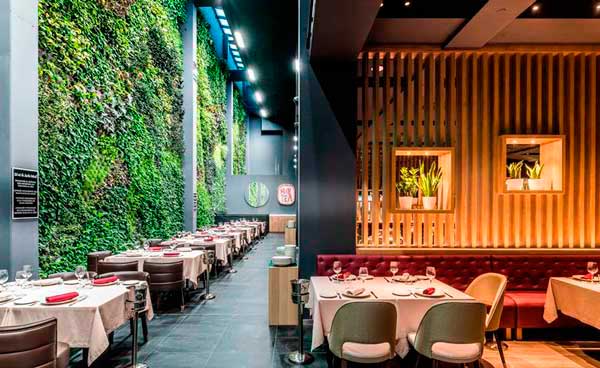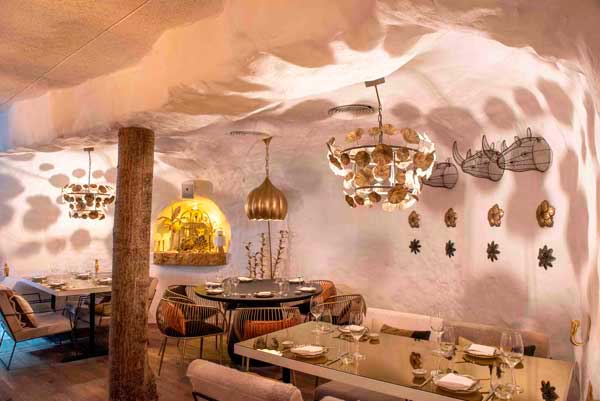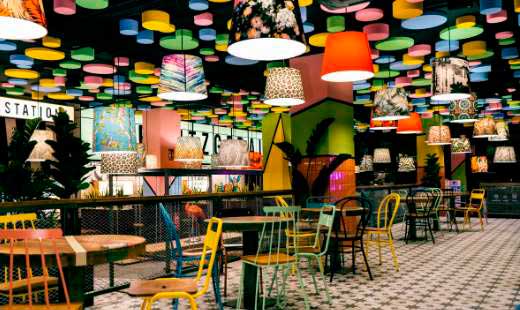Still struggling with the aftermath of the pandemic, bars, hotels and restaurants are slowly getting back to normal and are now facing the challenge of attracting consumers who are eager to go out and enjoy themselves, but who also are a bit more cautious and demanding a safe experience. The challenge is to get them back in… and consuming.
The Spanish catering industry is gradually recovering from the Covid-19 crisis, but things, alas, are not quite the same as before.
The pandemic is not quite over yet, and consumers continue to demand that hospitality establishments provide protective measures to prevent contagion. In fact, this remains the main reason for choosing one establishment over another: the distance between tables, cleanliness and hygiene, limited seating capacity, the existence of a terrace, the use of masks by staff, etc. are all measures that consumers are still asking from restaurants today, according to a recent study by The NPD Group.

In this context, the hospitality sector faces the challenge of winning back a consumer concerned about his or her safety who thinks long and hard about where and when to go out, but also, paradoxically, one in the mood for indulgence, fun and new experiences.
A dichotomy (health-containment versus pleasure, indulgence and fun) which bars and restaurants have to embrace.
In fact, in the wake of the severe restrictions suffered by the sector, indulgence is shaping up to be the main driver of consumption in the catering industry and other foodservice channels. “The post-pandemic consumer is planning more trips to bars and restaurants and is doing so primarily to indulge themselves,” says The NPD study. This is echoed by another recent report from Aecoc, which says that consumers are beginning to recover their pre-pandemic habits “and are once again willing to return to bars and restaurants, but the health crisis has consolidated a more in-home form of consumption, meaning users opt to go out on special occasions or to treat themselves, which means they are more selective in their choice”, explains Rosario Pedrosa, manager of the commercial strategy and marketing area at Aecoc.
Terraces are undoubtedly the big winners of the pandemic, having taken over the streets and it appears to be for good. They have become an extension of the dining room, making gains in equipment, comfort, climate control, lighting, comfortable furnishings… More costs, but more advantages for businesses. La Masía de Chencho, in Elche, is an example of a restaurant that has spread out, outfitting its terrace with bioclimatic pergolas to ensure maximum comfort outdoors:

“New” formats such as bakery-cafés or coffee bars, which merge the traditional bakery concept with café or bar service, or the new speciality coffee shops, are also successful. The interior design of these establishments is highly meticulous: it must evoke tranquillity and comfort to invite consumers to stay (and consume), and also offer a unique and different experience that leads to good memories and recommendations. A perfect example is the interior design of the new Casa Neutrale, a speciality coffee shop in Madrid, which, true to its name, opts for a decoration with pure, very simple lines to give greater prominence to the product.

Consumers value the details, the personalised attention, the atmosphere of the premises. Now more than ever, interior design in hospitality aims to create warm, natural atmospheres with fabrics and items that bring nature indoors… The Madrid restaurant Bálamo, for example, boasts Europe’s largest indoor vertical garden:

Another successful, fast rising formula is the unbeatable combination of food and fun, or restaurants and entertainment. A good example of this are the restaurants of The Salvaje Group, which have a unique setting that captivates diners. With an interior design from prestigious studios and always a touch of the exotic, the vibrant, exclusive and extremely pleasant atmosphere is complemented by indirect lighting and good music.

It should not be forgotten that, especially for the younger generations, experiences (and the ability to share them) are key. For millennials, for example, the entertainment a restaurant offers is a decisive factor in their choice. They are the target of the colourful establishments of The Fitzgerald Burger, with their disruptive, eclectic décor and highly original furnishings: they are spaces specially designed to leave an impression, where every corner has something to remember.

Technology also plays a key role in offering new restaurant experiences. Barcelona Bar, in the Colombian city of Medellín, is an interactive restaurant designed by the Catalan company Digalix where technology plays an important part of the design concept. Its main innovation is the XTable, interactive tables equipped with an ordering and entertainment system. There is also a projection system to add an immersive virtual experience to the menu at certain times.

Hotels: peace of mind, functionality, sustainability
And what about hotels? In the aftermath of the pandemic, the accommodation options that will succeed are “safe” places where guests can relax and feel protected. “In this scenario, interior designers and hoteliers must now, more than ever, work hand in hand to create new atmospheres of tranquillity, safety and hygiene in hotels, and be able to surprise guests with something extra,” says Patricia von Arend of the Denys & von Arend interior design studio. They are the authors of the newly refurbished Parador de Aiguablava, a perfect fresh and light example of the new hotel interior design:

Thus, the new hotels showcase larger and multifunctional common spaces, rooms with comfortable areas for breakfast and work, terraces, roof terraces and outdoor areas to make the most of the available space, and above all a “green philosophy” focused on the environment and sustainability, but also on comfort and multifunctionality.
Rooms should allow for work during the day and ensure a good night’s sleep . The trend is for them to be larger, quieter, with good light and air quality, and even include fitness equipment. Stays which the guest perceives as clean, safe and pleasant, but without the feeling of being in a clinic. The simple, natural rooms in neutral tones designed by Sandra Tarruella for the Empordà Golf hotel are a perfect example of the new “luxury” hotel:

Comfort, multi-functionality and an ecological approach (not to mention technology) are the keys to the new hotels, aware that the newer generations are much more attentive to sustainable values than previous generations. They are less drawn to details such as luxury fittings, but are much more demanding when it comes to the functionality of spaces.
Sustainability, moreover, is not only about caring for the environment: it is a social sustainability, falling within an idea that tourism does not colonise, rather it dialogues with communities and destinations, with spaces open to locals and non-locals. In the picture, the Planta Z terrace of the new Canopy by Hilton hotel in Madrid is open to everyone:

The use of hotels as flexible office and coworking spaces, known as “hybrid hotels“, can be a business opportunity for urban lodgings, which could increase their revenues by up to 20%, reveals a study by Colliers International. “It is about offering daily or even hourly flexibility for the rental of workspaces with high quality, personal service, something the tourism industry specialises in, all in an inspiring and dynamic environment”, explains Miguel Vázquez, Managing Director of Hotels at Colliers España. “The hotel industry is looking for initiatives to draw people to their hotels and create interaction between the local community and guests in an attractive atmosphere,” explains Nadav Fattal, CEO of Rooms, the new ‘workspitality’ brand of Leonardo Hotels:

New trends that increase the demand for furniture made of sustainable materials. Modular furniture, easy to assemble and disassemble, flexible to adapt to different configurations and to separate spaces, and at the same time easy to sanitise. At the upcoming edition of Hostelco (Barcelona, 4-7 April 2022), you will be able to find all the solutions for your hospitality business.
Marta Renovales, Chief Editor of (Profesionalhoreca.com)


